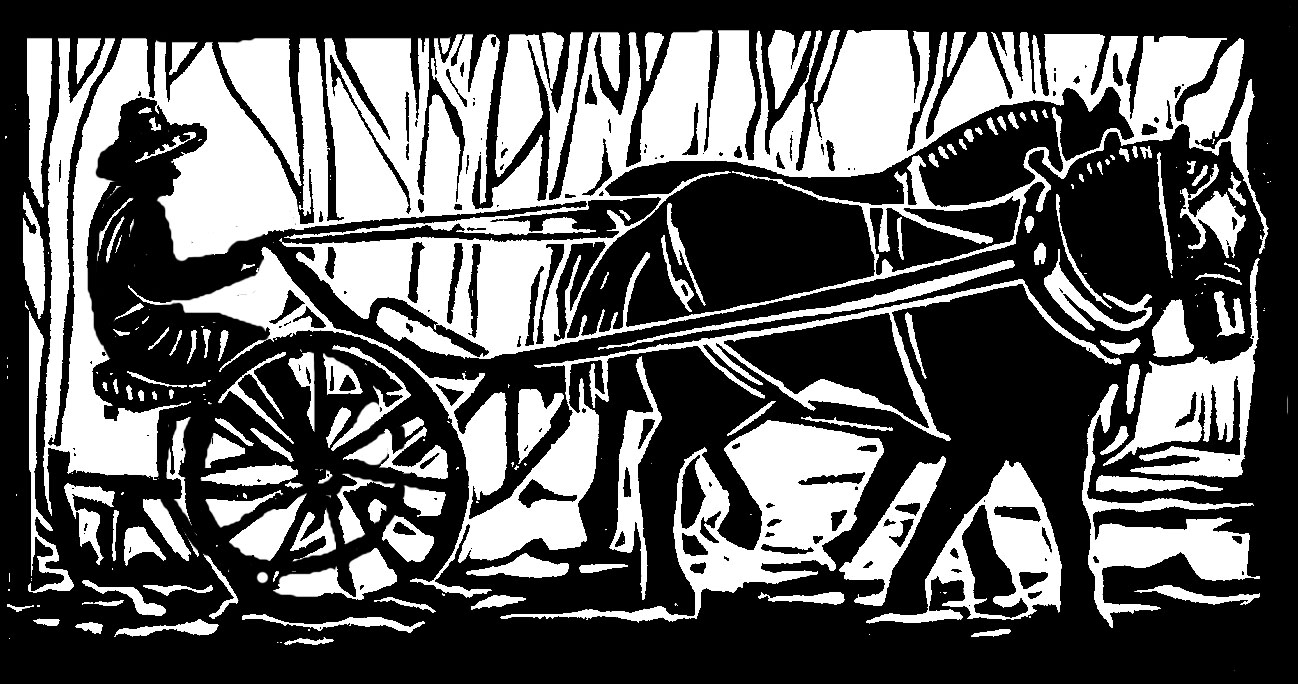Not long ago, here on our New Hampshire vegetable farm, we gave two farm tours, one to the Cheshire County Conservation District Board, and one to a Keene State College class studying ecological agriculture. We farmers enjoy an occasional tour, because it's fun to tell stories about our vegetables and our horses and our goofy, yet sustainable, farming.
But the nicest thing about giving farm tours is how much people appreciate our farm. Even as we say, “Oh, we haven't quite finished weeding this section yet,” meaning, “It looks so bedraggled and overrun by weeds because we haven't even started weeding it yet,” or “Oh, gee, we've got a lot of work to do in this greenhouse,” meaning, “We've had to ignore this for months because every other crop is so pressing,” people say, “What a beautiful place! What wonderful horses and vegetables! Everything looks great!”
This of course, is very nice to hear, and now we've had the even greater pleasure of going on other people's farm tours, courtesy of the recent Monadnock Farm and Community Coalition's Farm Tour Day. We wanted to visit all eighteen farms on the tour, but we only had time for four, which turned out to be three, because we got lost so much. We saw a lot of beautiful back roads of New Hampshire, and we also saw:
Wellscroft Farm in Harrisville, NH, a fine sheep farm and fence supply business. In fact, our new deer fence (thanks to a grant from the Natural Resources Conservation Service) came from Wellscroft, so it was nice to see all that fencing and then revel in the fact that our fence was already put up, not still waiting in enormous piles for the hours and hours of work it would take to build it.
But the best thing about Wellscroft was the sheepdogs. We got to see three dogs herding sheep and goats, and one dog guarding sheep and goats. The guarding mostly consisted of a huge white dog happily lolling in the shade while all we farm tourists rubbed his big fluffy belly. The herding, on the other hand, was a lively affair, with a demonstration of a young and overeager dog doing things she shouldn't, such as creeping up on the sheep, or racing around in circles in the wrong direction. We also got to see what happens when an active wasp nest is in the very run-in shed which a flock of sheep wants desperately to enter, to get away from a young and overeager sheepdog. “Oh, gee, this doesn't usually happen,” said the farmers. “What a beautiful farm,” we said. “What wonderful dogs! Everything looks great!”
Draft Gratitude is a draft horse and mule rescue center in Winchester, NH. There are 12 or 15 critters here, some of whom will go on to adoptive farms, and others who will peacefully, comfortably live out their lives with well-cared for arthritis or cancer or lameness troubles. We got to imagine happy retirements for all draft animals (including our own, right on our own farm, we hope), as we met the horses and mules, all outside enjoying the fresh air and snacking or snoozing.
Since we were there at feeding time, we also got to see how grumpy happily retired horses can be when a volunteer inadvertently changes the order of feeding. Squeal, snap, kick! “Oh, gee, this doesn't usually happen,” said the owner. “What a wonderful place!” we said. “What wonderful horses! Everything looks great!”
Picadilly Farm: We got to this farm five minutes before the farm tours ended. The farm tour brochures were very clear that a person should not come too early or stay too late. We tumbled out of the car, happily into the arms of our friends, the Picadilly farmers. “We got lost, and we really wanted to come here!” we said. “We're so glad it's you!” they answered.
Our farmer friends proceeded to give us a tour of the beautiful old barns, and the vegetable shed, and the greenhouses, and the you-pick gardens for CSA members. We walked around the fields and visited the piggie-wiggies, and then our friends invited us to pick from the you-pick gardens, fed us supper, and caught us up on farm news. Their farm news is much like ours, since Picadilly is also a vegetable and CSA farm, though on a larger scale, with similar farm news and troubles, also all on a larger scale. “Our tomatoes aren't quite what we'd like this year,” they said, and “Oh, gee, we're not quite finished weeding this section yet.”
“What a beautiful farm,” we said. “What wonderful pigs and vegetables! Everything looks great!”
There's nothing like a farm tour to cheer a farmer. Especially someone else's farm tour.
Originally published in the Monadnock Shopper News, Oct 25-Oct 31, 2017
